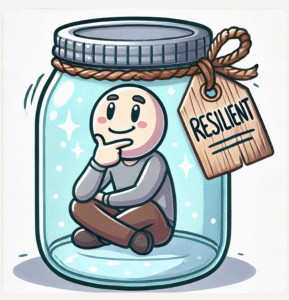Blog
Winter
Remember that even though it’s the end of the year, it’s also winter.
Which means that in nature, everything slows down.
Unlike hustle culture that tells you to speed up, and push through the holiday stress – winter reminds us that the closing of the year is actually time to go within, to slow down, and to rest.
So if you’re feeling an urge to hibernate, a yearn to do less, a longing for slowness, know that your body is reminding you of the rhythm of the current season – and that’s a beautiful thing.
If nature is designed to slow down during this time, so are we.
@lexyflorentina
From Rupture to Repair: Why Generosity Matters
We’ve all had moments where we said something we didn’t mean, or spoke in a way that we later regretted. So, this month, I want to normalize and reframe this kind of experience, and share a three-step process that can repair the damage after a rupture. This repair process is based on the work of Dr. Becky Kennedy, a psychologist, author, and founder of the Good Inside approach, whose rupture-repair framework offers leaders a practical, science-backed way to rebuild trust after conflict. Her work shows that accountability, curiosity, and connection can transform moments of conflict into opportunities for trust and growth.
So, what is a rupture? A rupture is any moment where trust, connection, or communication breaks down, even unintentionally. Ruptures are normal.
A few examples of ruptures include interrupting, dismissing, or shutting someone down; being reactive under pressure; or avoiding a tough conversation.
What defines great leadership – whether at work, with friends and family, or in our communities – is what happens next – the repair process.
Repair matters, because done with care, it restores psychological safety, trust and openness, collaboration, and emotional regulation.
When we move from rupture to repair, we pause and regulate ourselves so that we can shift our perspective from blaming others and beating ourselves up to recognizing that ruptures are inevitable – and opportunities for connection and growth.
The secret ingredient of the repair process to start with the MGI: the most generous interpretation of what just happened versus jumping to negative assumptions. We offer the MGI to ourselves and others when there is a rupture. This allows us to see the best in ourselves and others, and to listen and create connection.
It’s important to note that MGI doesn’t mean ignoring boundaries or letting harmful behavior go unaddressed. It means pausing, reflecting, and responding with curiosity and compassion rather than harsh criticism, while still honoring boundaries when needed.
The Principles of Effective Repair
- Separation of Person and Behavior: Recognize that the person is good inside and that the behavior is a sign of overwhelm, stress, or an unmet need.
- Choose Curiosity Instead of Judgment: Instead of “Why are you being a jerk?”, ask “What might be going on for the other person right now?” or “What are they feeling or trying to manage?”
- Two Truths Can Coexist: The person can be good inside, and their behavior can be problematic or hurtful.
- Mindset Shift: Because of our innate negativity bias, we tend to default to the least generous interpretation. This framework offers an opportunity to develop a new skill – engaging with people in a more respectful, connected, and productive way.
- Practical Question: When triggered by someone’s behavior, pause and ask: “What’s my most generous interpretation of that behavior right now?”
The Three Steps of the Repair
STEP 1: The Rupture
This step involves self-awareness: you notice that you said something hurtful or reacted in a way that you regret.
STEP 2: Repair With Yourself (internally)
Most people are never taught this step. It involves self-reflection and kindness toward yourself. It’s important to understand that you’re a good person who made a mistake. You might think or say to yourself something like, “I’m a good person. I made a mistake. I’m not special – mistakes happen to everyone. This behavior doesn’t define me, and I’m going to try to act differently.”
Get curious rather than defensive and focus on regulating your emotions. Find compassion, grounding, and connection within yourself so that you can be present for the other person.
STEP 3: Repair With the Other Person
A repair includes naming what happened, taking responsibility for your behavior, and acknowledging the impact it had on someone else. Bonus points for sharing what you will do differently next time.
Apology + Impact + Forward Intention
“I’m sorry for the way I spoke to you earlier (apology). I imagine my words and tone may have felt dismissive, and I regret that (impact). Next time, before I respond, I’ll focus on slowing down, pausing, and engaging in a more respectful and kind way (forward intention).”
Common Pitfalls to Avoid
- Defending your behavior
- Blaming the other person
- Over-apologizing
- Pretending it didn’t happen
- Justifying your intent
When Not to Repair Immediately or Not At All
- Delay the repair if you are emotionally dysregulated, angry, flooded, or defensive.
- Also delay, or do not attempt, a repair if a serious boundary has been crossed and your physical and/or emotional safety is at risk.
In Closing
I invite you this month to try meeting ruptures with awareness rather than urgency. Pause, acknowledge what occurred, regulate yourself, and move toward repair. Choosing the most generous interpretation (MGI) of your own and others’ behavior helps rewire our natural tendency to assume the worst, strengthens presence, and supports you in remaining calm during moments of tension. The good news is that once you realize you’ve ruptured a relationship, you’re already a third of the way toward repair!
For Deeper Dive: Click here for How to Repair the Damage After an Argument with Dr. Becky Kennedy on 10% Happier with Dan Harris (32 minutes).
Revenge versus Forgiveness: What the Science Says
This month, I’ve been reflecting on the concepts of revenge, grudge-holding, and the value of forgiveness—and how these tendencies affect our brains.
James Kimmel, Jr., a lecturer in psychiatry at the Yale School of Medicine and an expert on the psychology of revenge, recently published The Science of Revenge: Understanding the World’s Deadliest Addiction—and How to Overcome It. In it, he unpacks the neuroscience and psychology behind our deeply human craving for revenge and how, if left unchecked, it can cause profound harm at the personal, societal, and even geopolitical levels. By framing revenge as an addictive process, he offers not only insight but also research-backed strategies for breaking free from cycles of rumination, grudge-holding, and destructive behavior.
Key Insights on Grudge-Holding, Revenge, and Breaking the Brain’s Oldest Addiction (Kimmel)
- Revenge-seeking is wired into the human brain, delivering fleeting pleasure but fueling a deeper cycle of personal pain and harm. Think of the Buddhist teaching of “honey-tipped poison” or “a drop of honey on the edge of a razor blade”.
- Grudges and fantasies of “getting even” activate the same addictive (dopamine-driven) reward pathways as drugs or gambling.
- The line between healthy justice and destructive revenge is thinner—and trickier—than most of us realize …and recognizing that line requires awareness, restraint, and empathy.
- Forgiveness, on your terms, rather than the offender’s, is a science-backed antidote that can shift the brain out of pain and rumination to relief and regulation.
Six Practical Ways to Work with Revenge Cravings & Grudges (Kimmel)
- Practice “imaginative forgiveness.” Privately imagine what it would feel like to move past your grudge, even if you never communicate this to the other person.
- Use the “courtroom of the mind.” Role-play a mental trial (you as judge, jury, and witness), then notice if revenge brings relief—or more pain.
- Notice your body’s signals. When you feel wronged, pause and observe the physical sensations of pain and anger in your body before acting. (My notes – It’s important not to rush through this step toward offering forgiveness. Afflictive emotions such as anger, sadness, or grief must be respected, witnessed, and allowed to move through body – not suppressed or hurried. Forgiveness is a practice and takes time).
- Disrupt rumination cycles. Each time a revenge fantasy arises, experiment with visualizing yourself letting it go or gently shifting focus – again, and again.
- Reframe “justice” vs. “revenge.” Ask yourself, “is my intention to set a boundary for safety and accountability, or to punish?”
- Lean into self-forgiveness. If you’ve struggled to let go in the past or regret a reaction, extend the same imaginative forgiveness and compassion to yourself.
Additional Resources
- Click here for Are You a Grudge Holder or a Revenge Seeker? Here’s How It’s Hurting You – and How to Get Over It with James Kimmel, Jr on 10% Happier with Dan Harris.
- WJS subscribers click here for The Science of Revenge’ Review: Vengeance Isn’t Benign: When people hurt us, we want to get back at them—it’s only natural. But do thoughts of retribution harm us? Are there alternatives?
How to Be More Resilient in Tough Times

I’ve been feeling a bit unsettled and unanchored lately. In so many ways, my clients, friends, and people in my community remind me that I’m not alone. Times are tough, with ongoing geopolitical conflicts, divisive domestic politics, economic uncertainty, and a polarized public discourse that affect us all. Even people who are usually steady and kind don’t always show up that way right now.
I’d like to share a few practices that have resonated with my clients and with me personally. These practices help us face the world — and ourselves — with honesty, while also doing “the work” to remain grounded, calm, compassionate, and effective as leaders in every part of our lives.
Click here for a guided meditation called On Being with Suffering by Norman Fischer (20 minutes). This meditation reminds us that difficult emotions are a normal part of life, present even in good times, and especially during tough times.
Click here for a guided meditation on Forgiveness by Norman Fischer (17 minutes). This meditation acknowledges how challenging the world, ourselves, and others can be. Forgiveness is not quick or easy — it is a gradual process that requires patience, effort, and consistency.
Click here for a guided meditation on Loving Kindness with Elisha Goldstein (7 minutes). This meditation trains the mind to shift toward positivity and the body to feel more grounded. By planting seeds of compassion and kindness, we can show up with greater balance and confidence.
These are the practices that clients and I have been leaning on lately, and they’ve helped me stay present and grounded when life feels uncertain. I hope you’ll try one or two for a few weeks and notice what opens for you.
You Can’t Read the Label from Inside the Bottle: Why Feedback Matters

While sipping matcha and coffee with my dear friend Nancy, I was struck by something she didn’t seem to realize, something we often call a “blind spot” in the coaching world: she’s an amazing yoga teacher.
You see, Nancy teaches yoga at two studios in Princeton and has a devoted following. People genuinely love her and her classes. Nancy and I met eight years ago during yoga teacher training, back when we were both new to teaching and needed more than a gentle nudge just to stand in front of the room and lead.
Now, her voice is strong, her guidance steady, and her students fiercely loyal. Nancy is the kind of person who lights up a room. People literally smile at the mention of her name. And yet, she has no idea how deeply she’s admired or how much well-being, resilience, and joy she has brought to our community.
As we chat over our drinks, I tell Nancy again how much people value her teaching, and she looks genuinely surprised. I find myself repeating it, encouraging her to truly own it.
This moment reminded me of a truth I’ve seen time and again over more than 20 years of leadership coaching: quality feedback is a gift. And the ability to both offer and receive it is a skill, one that requires intention, a clear process, consistent practice, and courage. It’s essential to our growth as leaders, both personally and professionally.
We can’t always see ourselves clearly. Sometimes we’re stuck inside ourselves, unable to see what the world so clearly sees. We need honest, thoughtful feedback, delivered skillfully by people we trust, to help us recognize our strengths and own our gifts.
Why Forgive? How Forgiveness Frees Us – Even When Reconciliation Isn’t Possible
Given the current global climate — including war, ongoing conflicts, geopolitical tensions, divisive politics, and economic uncertainty — many of my clients (and I) are experiencing a kind of emotional heaviness. A recurring theme has emerged: a need to make peace and practice forgiveness — with the world, with our leaders, our colleagues, our family members, and sometimes even with ourselves.
Keep in mind, forgiveness is often a slow and painful process; we do it for ourselves, not the other person. We forgive, but we don’t forget; we don’t condone bad behavior. Forgiveness allows us to take control of our own destiny, understand that those in pain often cause pain, accept what is, let go of emotional suffering, and ultimately show up lighter and freer. This emotional clarity and release are essential for executive leaders who strive to maintain composure, presence, and energy — especially when navigating high-pressure or emotionally charged situations.
A recent episode of NPR’s Fresh Air, featuring painter Titus Kaphar, titled “Exhibiting Forgiveness,” offered a powerful reflection on what it truly means to forgive. Several key themes stood out:
- Forgiveness and reconciliation are not the same, even though we often treat them as interchangeable.
- You can forgive without continuing the relationship; reconciliation is optional.
- Forgiveness is primarily about us, not about the other person.
- It allows us to unburden ourselves — to say, “I’m not carrying this anymore. It’s too heavy. I’m done with it.”
- Forgiveness requires the renegotiation of boundaries — deciding what you will and will not allow going forward.
Additional Resources on Forgiveness
- Watch the film Exhibiting Forgiveness (R, 2024, 1h 57m) on your favorite streaming service — included with Hulu membership or available for rental elsewhere.
- Click here to listen to the painter Titus Kaphar on Exhibiting Forgiveness on NPR’s Fresh Air podcast with Terry Gross (43 minutes).
- Click here to listen to and practice a forgiveness meditation with Norman Fischer, a client and personal favorite (18 minutes).
- Click here to download a worksheet to help you establish a forgiveness practice through meditation or journaling.
- Click here to watch and reflect on Jack Kornfield’s 12 Principles of Forgiveness (14 minutes).
- Click here to read How to Show Up Cheerful During Tough Times, which includes many resources for cultivating and sustaining joy.
Even the Dog is Tired 🐾. How to Reset and Rest.

“Little Dog’s Rhapsody in the Night” by Mary Oliver
He puts his cheek against mine
and makes small, expressive sounds.
And when I’m awake, or awake enough
he turns upside down, his four paws
in the air
and his eyes dark and fervent.
“Tell me you love me,” he says.
“Tell me again.”
Could there be a sweeter arrangement? Over and over
he gets to ask.
I get to tell.
My husband and I had a wonderful weekend—dinners out, barbecuing, baking, and spending time with friends. Our home was full of conversation, laughter, and good food. Even our dog, The Bear—a sweet, extroverted lover of all beings—had a great time.
And yet, I found myself completely wiped out. I kept thinking: too much of a good thing can still be too much. Even joyful occasions can leave us feeling overwhelmed. I felt exhausted and overstimulated—until I glanced over at The Bear, passed out on a pillow on the couch, refusing to move. That was my cue: time to pause, recharge, and take a breath.
That moment got me thinking—not just about my own exhaustion, but about how often we push past our limits in the name of doing more, especially in leadership.
For many leaders, constant stress and the potential for exhaustion are a quiet undercurrent of daily life—driven by pressures that include meeting revenue and profit goals, managing difficult team dynamics, navigating tariffs and shifting political landscapes, and carrying responsibility for decisions that affect people and outcomes, to name just a few.
In this month’s newsletter, I want to share a simple but powerful practice I brought home from a recent hiking, biking, and meditation retreat at the Himalayan Institute: diaphragmatic belly breathing. This technique has been helping me reset, recharge, and show up with greater ease and presence.
My massage therapist, Nema Nyar, also emphasized the importance of activating the parasympathetic nervous system—the body’s natural “rest and digest” mode—through diaphragmatic belly breathing. It’s one of the most effective and accessible ways to quiet the mind and calm the body.
Recognizing the need to slow down and reset isn’t just about self-care—it’s foundational to how we show up as leaders in our personal lives, communities, and organizations. Grounded, intentional presence begins with regulating our breath—and ourselves.
Animals Know When to Rest
Animals naturally breathe diaphragmatically, especially when they are at rest or feeling safe. In fact, watching a relaxed animal—like a dog lying on its side or a cat curled in a sunny spot—is one of the best demonstrations of deep, belly-centered breathing.
How Animals Breathe at Rest
- When calm, their abdomen rises and falls gently—a sign of diaphragmatic belly breathing.
- Their chest barely moves, because the diaphragm is doing the work.
- Their breath is quiet, slow, and rhythmic, naturally regulating their nervous system.
Why This Matters (and What We Can Learn)
- Animals don’t override their breath with tension or overthinking—humans do.
- Under stress, we tend to breathe shallowly, using the upper chest.
- Animals don’t cling to thoughts—they follow their body’s cues, which helps keep them regulated and grounded—something we, too, can relearn.
Ever Watch a Sleeping Dog?
- You’ll see their belly move in and out slowly, sometimes followed by a big sigh—a natural nervous system “reset.”
- That sigh is a natural parasympathetic (rest and digest) response—the body’s way of saying: “I’m safe. I can let go.”
In Summary
Yes, animals do diaphragmatic belly breathing by default, especially in restful states. It’s part of how they stay regulated and recover from stress—something humans can consciously relearn by observing and practicing the same technique.

In Memory of Friday 2/28/11-7/29/24.
I will never forget you!
Why We Judge and What to Do About It
Recently, I heard Glennon Doyle talk about judgment as a survival technique — something I had never really considered before. But as she spoke, the idea that we judge others to protect ourselves began to make sense. It even helped me see and appreciate my mother, who passed away 17 months ago, in a new light. I came to understand that she may have judged others to manage her own emotions and sense of identity — and that I need to be aware of that same pattern in myself, so I don’t repeat it.
That insight — that we judge others as a form of self-protection — sparked a desire to take a deeper dive into the topic, which I’m exploring in this month’s newsletter.
Why We Judge: A Summary
Judging others is a natural human behavior, rooted in both evolutionary and psychosocial factors. While it can sometimes feel negative or unfair, it serves several psychological and social purposes:
- Mental Shortcuts: We make quick judgments to conserve mental energy and navigate our environments efficiently — a survival tactic that helped early humans assess safety, trustworthiness, and risk.
- Social Norms and Belonging: Judgment reinforces group values by flagging behaviors that don’t align with shared expectations, helping maintain group cohesion and encouraging conformity.
- Self-Esteem and Identity: Comparing ourselves to others can bolster our sense of competence or morality, shaping how we see ourselves in relation to others and within social groups.
- Sense of Control: Judging others gives us a way to organize and predict our interactions, offering a sense of order in an otherwise uncertain and unpredictable world.
- Emotional Regulation: Sometimes, judgment acts as a defense mechanism — allowing us to deflect our own discomfort or insecurities by focusing outward.
Judgment helps us evaluate risk, foster connection and belonging, bolster self-esteem, and make sense of a complex world. The challenge for leaders is learning how to balance this natural tendency with empathy, curiosity, and conscious awareness of our biases.
Why Understanding Our Judging Mind Matters
As leaders – in organizations, communities, and families – our role isn’t to eliminate judgment; it’s to notice when it shows up, understand where it’s coming from, and choose how we respond. When we do that well, the benefits cascade across our teams, our culture, and our lives.
What Does this Look Like in Practice?
By fostering psychological safety, curiosity, diversity, and emotional regulation, leaders can help themselves and others manage the downsides of a judgmental mind.
- Psychological Safety: People are more likely to speak up, admit mistakes, and take smart risks when they don’t fear being harshly judged
- Curiosity: Teams feel more connected, engaged, and open with leaders who show up as fair, thoughtful, and curious.
- Diversity: Nonjudgmental environments invite people to share new ideas and different perspectives — even when they challenge the status quo.
- Emotional Regulation: Practicing nonjudgment means regulating your own reactions, tuning into others, and responding with intention — all foundational to strong, human-centered leadership.
How to Manage Our Judging Minds
We can’t turn off our judgment — but we can pause, slow down, and engage our minds more intentionally, allowing space for curiosity, compassion, and more thoughtful leadership.
Here are a few thought questions to help us manage our judging minds:
- Can I pause my initial reactions and shift to a more curious mind state?
- What might I learn from this person’s perspective — especially if it differs from mine or the group’s point of view?
- Especially when I disagree, how can I suspend judgment, truly listen, and mirror back what I’m hearing so the other person feels seen and stays engaged?
- How can I separate the behavior from the person, and avoid taking it personally?
- How can I focus on bringing out the best in this person, even if we’re not naturally aligned?
In Closing
Judging is a natural human tendency — it’s how we make sense of the world and protect ourselves. But when left unchecked, it can lead to bias, disconnection, and missed opportunities.
As leaders, the goal isn’t to eliminate judgment, but to notice it, slow it down, and choose how we respond. When we do, we create space for stronger relationships, better decisions, and more inclusive, high-performing teams.
Deeper Dive
Click here to listen to“Why Am I Like This?” with Glennon Doyle and Abby Wambach on the Ten Percent Happier Podcast with Dan Harris (52 minutes).

